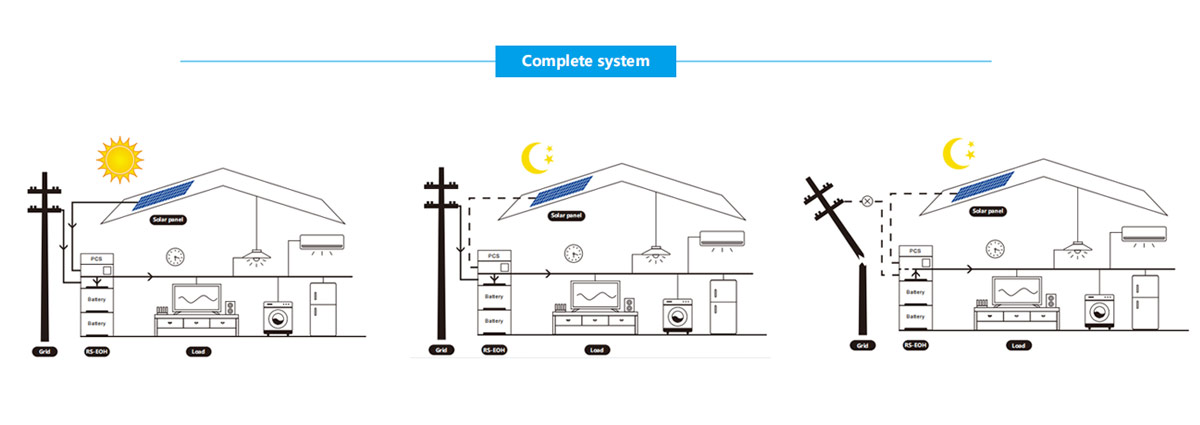Design An Off-grid Solar Power System
Jul 29, 2022
Read:435
Source: Road smart
Solar energy is the most abundant of all renewable energy resources and can even be harnessed in cloudy weather. Nowadays more and more people are turning to solar. Some are considering to install off-grid solar power system.
A complete off-grid solar power system has all the necessary equipment to generate, store, and supply solar energy onsite. As off-grid solar power systems operate without a connection to any external power source, they are also referred to as stand alone solar power systems. Off-grid solar power systems are ideal for remote rural areas and applications where other power sources are either impractical or are unavailable to provide power for lighting, appliances and other uses.
An off-grid solar power system is made up of several key components. To be truly off-grid, your system needs to have batteries to store the energy you generate. It will also need solar panels to generate energy and some other equipment to bring it all together.
A typical off-grid solar power system design will look something like this:
1. Solar panels and mounting kits for roof or ground mounting.
2. Power inverter to turn DC current stored in your batteries into usable AC current.
3. Charge controller to manage solar energy conversion.
4. Batteries to store the energy you generate.
5. Monitoring system so you can manage power generation and usage.
6. Cables, fixtures and fittings.

So, how to design an off-grid solar power system for your own need? This article will talk about it and offer you some information.
First, calculate your total electricity needs This is one of the most important steps you can take to ensure you will not waste your money on an oversized system or end up with a system that isn’t able to sufficiently meet your energy need. In order to correctly determine the energy need, you can use a load calculator or work directly with professional personnel. Enter each appliance you will be powering with your energy system, how often you use it per day, as well as the appliance’s relevant specifications. Try your best to remember every appliance you will be using with your power system.
Second, determine the number of solar energy storage batteries you will need. You will need to figure out how many batteries you need to properly store all of that energy as well as meet your power and current energy needs. During this process, make sure to ask yourself questions like whether you only need enough storage for a day or two, or if you need to have enough storage for more days. Besides, the battery types should be taken into consideration, too. Among the few major battery types, the most advanced option today is the lithium-ion battery, which packs more energy capacity per unit volume, and also offers some other pros such as greater safety and reliability.
Thrid, determine the number of solar panels. After you know how much energy you need to produce per day from your load calculations, you need to calculate how much sunlight will be available for you to harvest from, otherwise known as “sun hours.” The number of “sun hours” is determined by how many hours the available sun in a given location shines on your panels at a specified angle throughout the day.
Then, you need to select your solar charge controller and solar inverter. A solar charge controller is a device that regulates current between your solar panels and the batteries. Its job is to ensure a smooth current between panel and battery and to ensure batteries are not overcharged.
The final major piece of off-grid power system design is selecting a solar inverter. An inverter’s job is to turn DC energy stored in your batteries into AC power. As a general rule, to run a home that is constantly in use, we suggest you to use a pure sine wave inverter.
The above is about how to design your own off-grid solar power system. Hope you will learn something from this article.
Table of Contents
